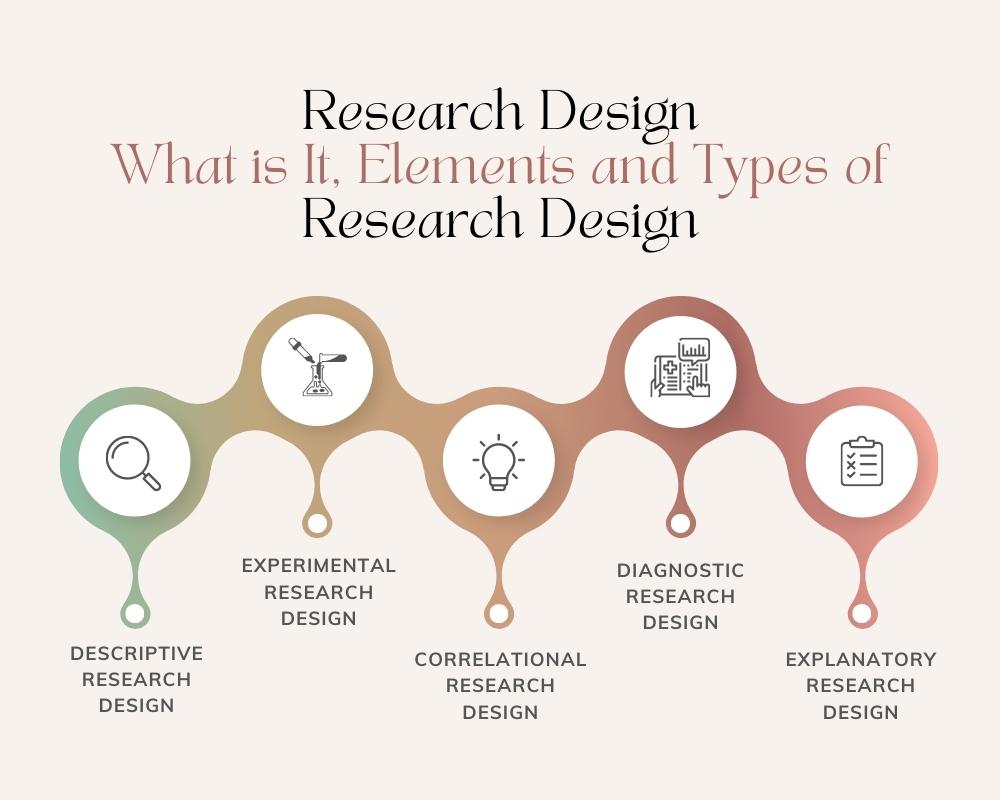
When you are designing a research project, it can be difficult to know what kind of research design you should use and why. To help you make the right choices, we have outlined some of the most common research designs and elements of different types of research design. Research Design is the process through which a researcher decides how to tackle their research problem and collect data for analysis. It will determine what kind of information your study will collect and how it will be collected in order to answer your specific research questions.
Table of Contents
What is a Research Design?
A research design is an approach to research that determines the methods, procedures and techniques that you will use to collect data, and what you will do with that data once you have it. It is important to note that a research design is not the same as a research method, which is the specific set of tools researchers use to conduct research. Researchers will choose their research design based on the specific research question they want to answer and the context in which they are conducting the study. A well-designed research project will help you answer research questions and produce valid and reliable insights and results.
Research Design Elements
When collecting data, impactful research usually has a minimum bias in data and increases trust in the data’s accuracy. A design that produces the slightest margin of error is generally considered the desired outcome: the following are crucial:
- Accurate purpose statement
- Techniques used for collecting and analysing research
- The method used for analysing collected details
- Type of research methodology
- Probable objections to research
- Settings for the research study
- Timeline
- Measurement of analysis
Major Types of Research Design
The research design is categorised into two major types of perspectives: Quantitative Research Design and Qualitative Research Design.
Qualitative Research Design
Qualitative research is used to answer questions like – Why, What, How and What’s the underlying reason behind this phenomenon? It is used to gather rich data like deep insights and meanings and is often used to explore topics that are new or where there is little existing data or literature. A qualitative research design usually consists of 5 stages: For each stage, researchers will use different qualitative research methods to collect data and analyse it to get the rich and in-depth data required for qualitative research. These methods include conducting
- one-on-one interviews
- group focus observations
- and reading different types of texts like journals, articles, newspapers, and books.
Quantitative Research Design
Quantitative research is used to answer questions like – How much, how many, and What is the exact number? It is used to gather precise data and facts, like numbers and figures. Quantitative research is most effective when you need to collect precise data, like statistics and figures, on a large population. For example, you can use quantitative research methods to find out the percentage of people who consumed a certain product in the last month, or you can use it to determine the average hours people spend watching TV each day. For each stage, researchers will use different quantitative research methods to collect data and analyse it to get the precise data required for quantitative research. These methods include:
- conducting surveys
- creating questionnaires
- and using tools like calculators and computers to gather large amounts of data.
Quantitative vs. Qualitative Research Design
The differences between quantitative and qualitative research design are as follow:
|
Quantitative Research |
Qualitative Research |
|
Focuses on putting ideas and hypotheses to the test |
Concentrate on generating ideas and developing a theory and hypothesis |
|
Maths and statistical analysis were used to examine the situation |
Summarising, classifying, and analysing data were used to conduct the analysis |
|
Numbers, graphs, and tables are the most common forms of expression |
Mostly represented with words |
|
It requires the participation of many people |
Only a few people are required to answer |
|
Closed questions |
Open-ended questions |
Mixed Methods Research Design
Mixed methods research is the combination of qualitative and quantitative research. It is used to gather rich and precise data in one study. Mixed methods research is a combination of qualitative and quantitative methods in one study. For example, in a study, you can use focus groups to collect rich data and use a survey online to gather precise statistics from a large population. In order to get valid and reliable results, you must carefully plan how to combine your methods and make sure that each method is collecting the data that you need for your study.
When to use qualitative, quantitative and mixed methods research design?
Before choosing a specific research design, you must answer some key questions: – What is your research question? – What type of information are you trying to find out? – What is your study context? Once you have answered those questions, you can then decide what type of research design will work best for you. Depending on your design, you will have to select different methods and tools to collect your data. If your research question is broad, you should use a qualitative research design to gain rich insights, meanings, or concepts behind the data. If your question is specific, you should use a quantitative research design to precisely measure a specified quantity. Finally, if your research question is broad and specific, you should use a mixed methods research design to gain rich insights and precisely measure a quantity.
5 Type of Research Design
These can be further broken down the types of research design into five categories
Descriptive Research Design
In Descriptive Research Design, the researcher explains the situation or case in detail in their research. This design is a theory based which is created by gathering, analysing and presenting collected data. This design allows the researcher to give insight into the why and how of research. Unlike in experimental research, the researcher does not control or change any of the variables in a descriptive research design instead they just observe and measure them.
Experimental Research Design
The process of organising a study to make sure the findings are valid and dependable is known as experimental design. It entails describing the variables in the study, how to measure them, and what controls will be implemented to minimise error. A well-designed experiment enables reliable data interpretation and can aid in the identification of cause-and-effect connections.
Correlational Research Design
The relationships between two or more variables are examined using correlational research design, a type of nonexperimental research design. In this kind of study, the researcher examines the relationship between the independent and dependent variables rather than manipulating or controlling the independent variable.
Diagnostic Research Design
In a diagnostic research design, the goal is to investigate the underlying cause of a specific circumstance. This approach might help you investigate in-depth the factors that contribute to problems that your customers might encounter. The problem initiation phase, problem diagnostic phase, and problem solution phase are the three phases that make up a design in general.
Explanatory Research Design
Explanatory research design is used by researchers to explore, enhance, and explain theories and ideas, as the name implies. This design approach is used to identify the gaps in research or to shed light on hazy areas of a certain subject.
Limitations of different research designs
In the end, no one research design is best for every research question. There are, however, some limitations to consider when choosing a research design. For example, qualitative research does not allow you to make precise numbers-based conclusions. Similarly, quantitative research does not allow you to make in-depth conclusions. Finally, mixed methods research, while it allows you to do both, can make it difficult to interpret the results of each method. Additionally, each research design has certain time, cost, and resource constraints.
Key takeaways
There are several different types of research design, each with its own set of benefits and limitations. The type of design you use will depend on the nature of your research question. Before choosing a design, you must first answer some key questions. When you do this, you can then decide what type of research design will work best for you. Knowing the different types of research design can help you decide which one is best for your research question.







